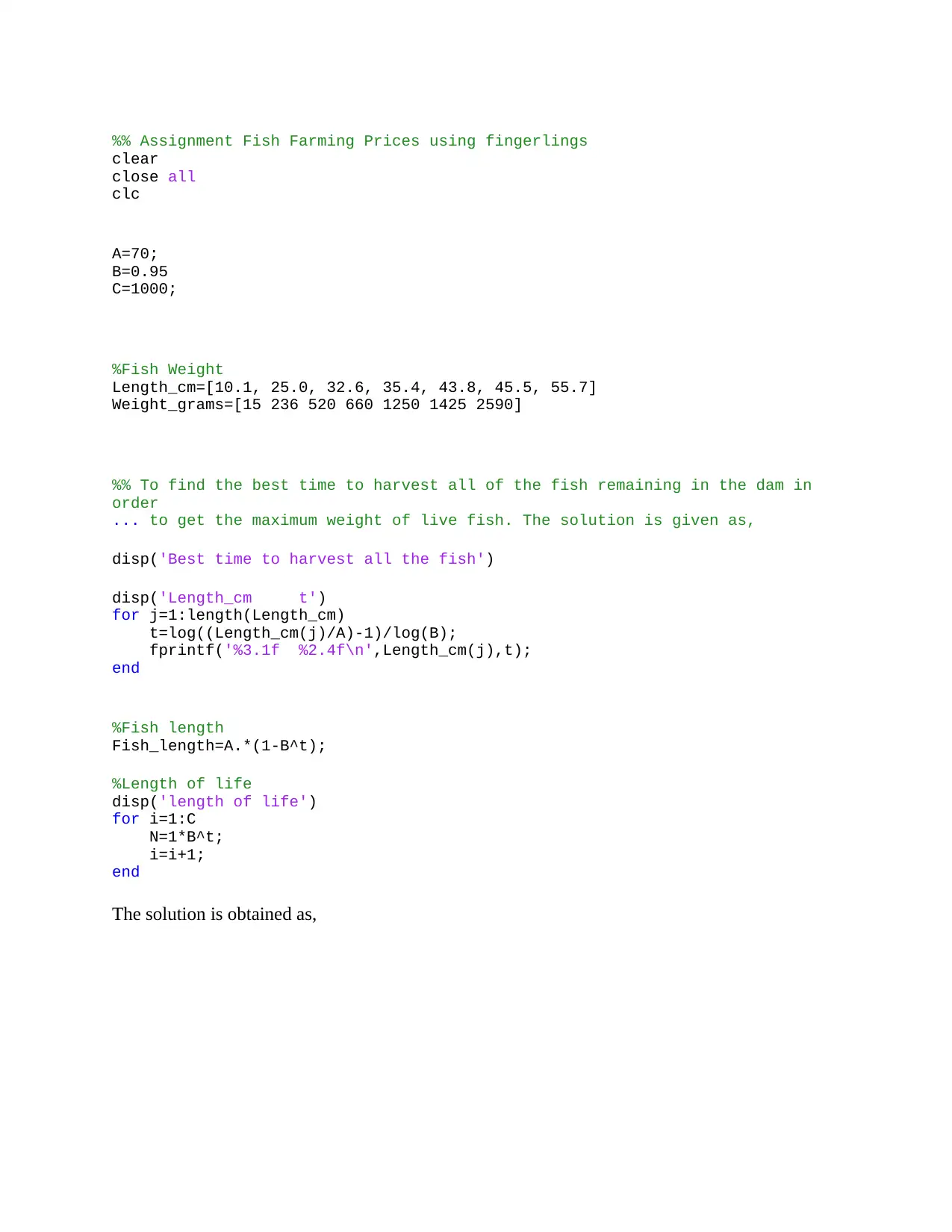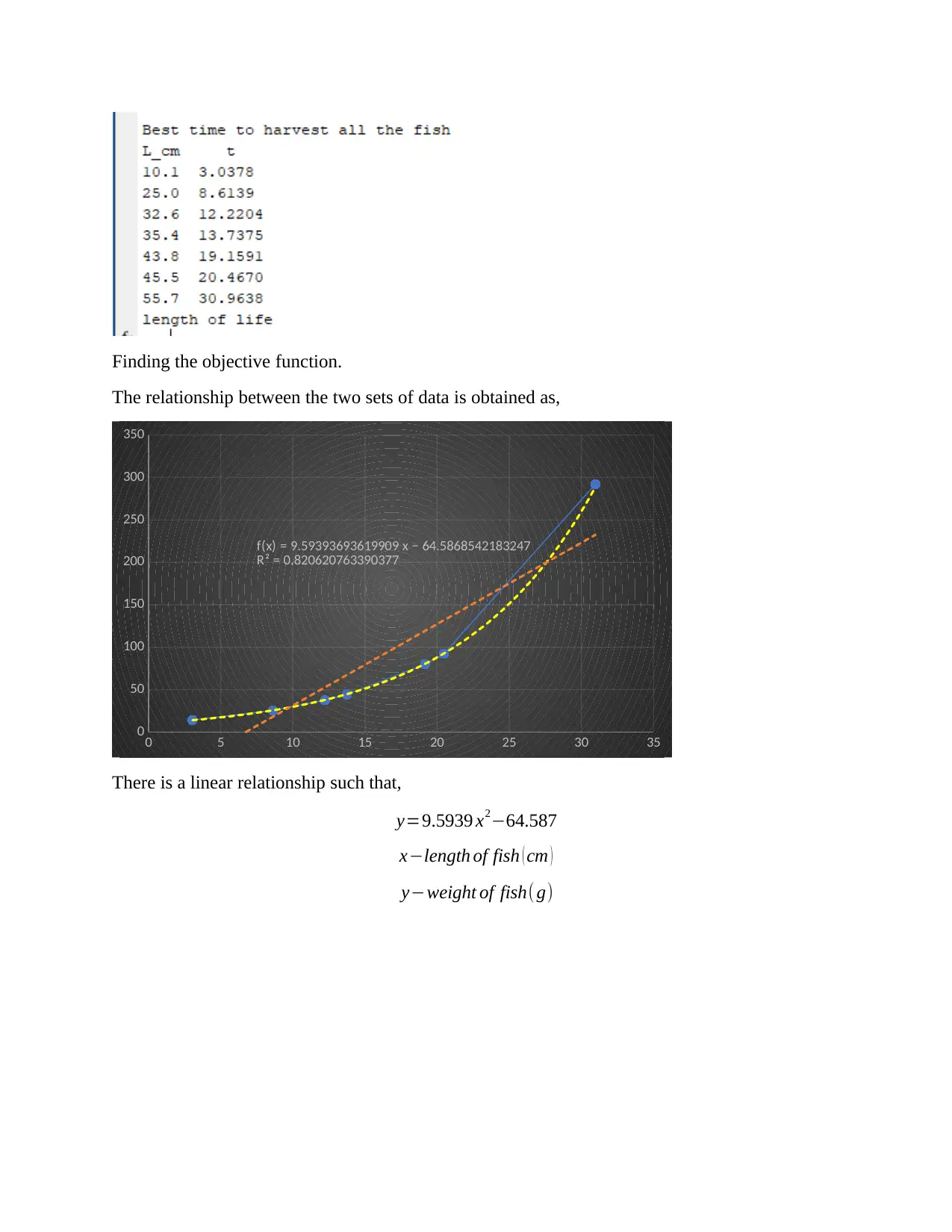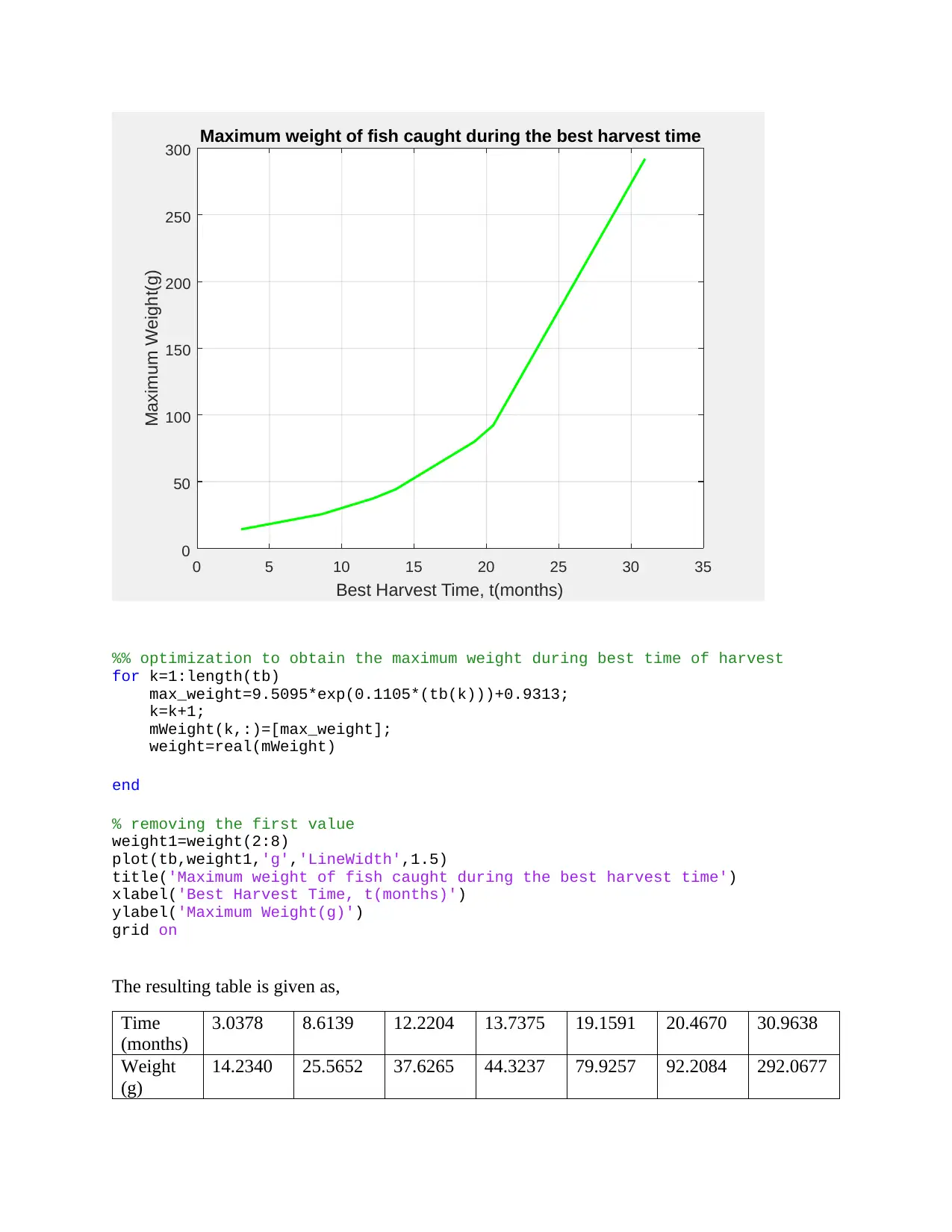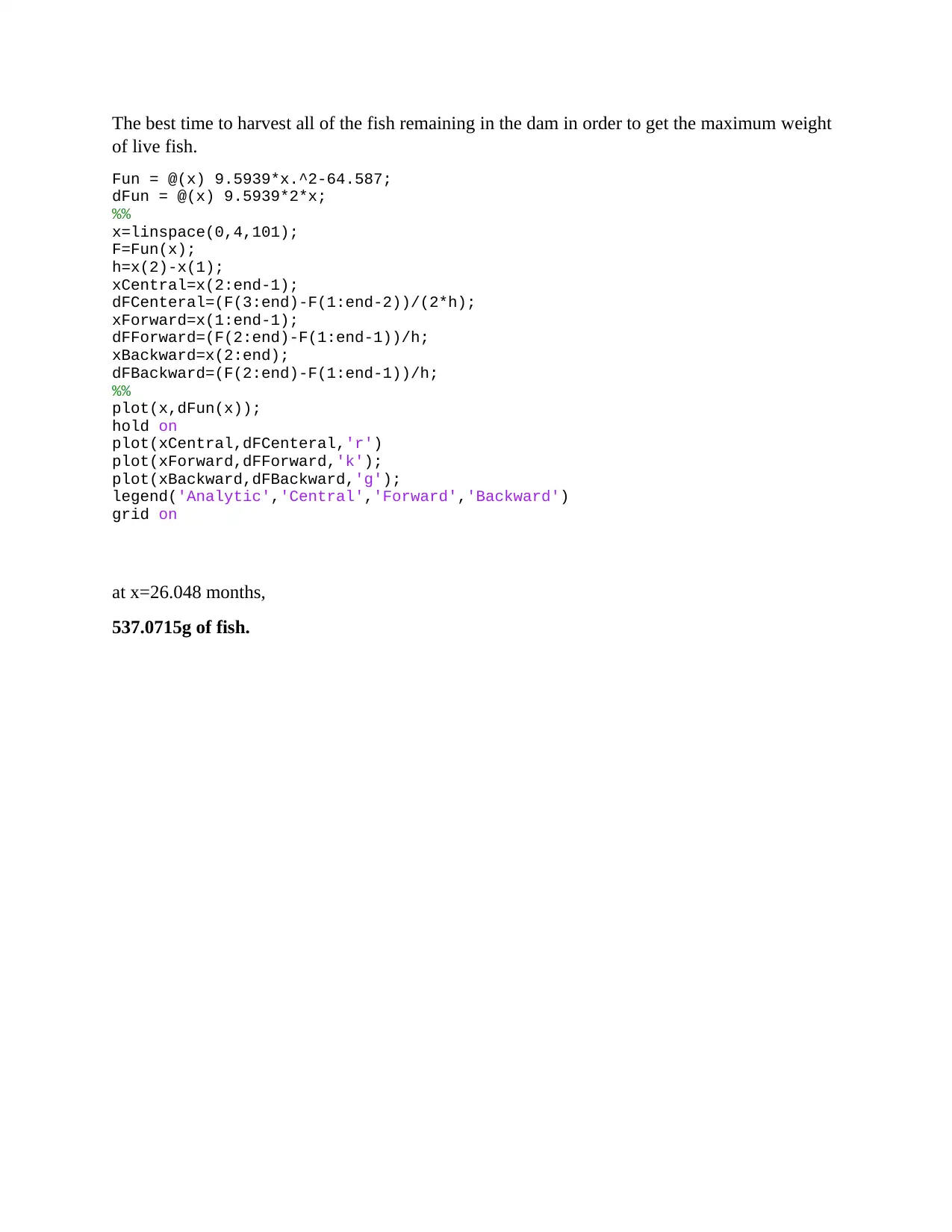Economic Modeling: Optimizing Fish Harvest Time for Maximum Weight
VerifiedAdded on 2023/06/10
|4
|638
|181
Homework Assignment
AI Summary
This assignment focuses on optimizing the harvest time in fish farming to achieve the maximum weight of live fish. It utilizes a given formula relating fish length to time elapsed since the fingerlings were placed in the dam, as well as weight-length data for a specific fish species. The assignment aims to determine the best time to harvest the fish by considering both the growth rate and the mortality rate of the fish population. It establishes a relationship between fish length and weight, finding a linear equation to model this relationship. The solution involves finding the time at which the fish should be harvested to maximize their weight, taking into account the decreasing number of live fish over time. The assignment also incorporates optimization techniques to determine the maximum weight during the best harvest time, providing a table of time versus weight and a plot visualizing this relationship. The study concludes with an estimation of fish weight at a specific time using numerical methods.
1 out of 4










![[object Object]](/_next/static/media/star-bottom.7253800d.svg)